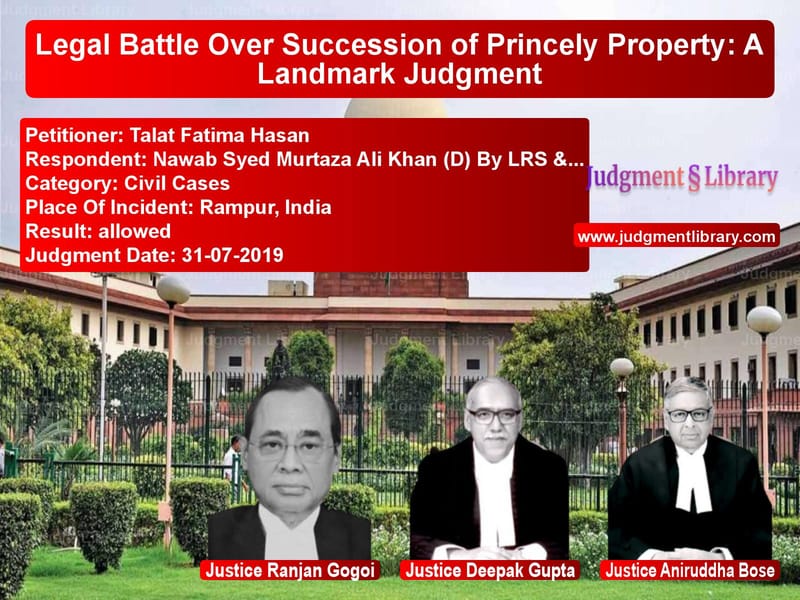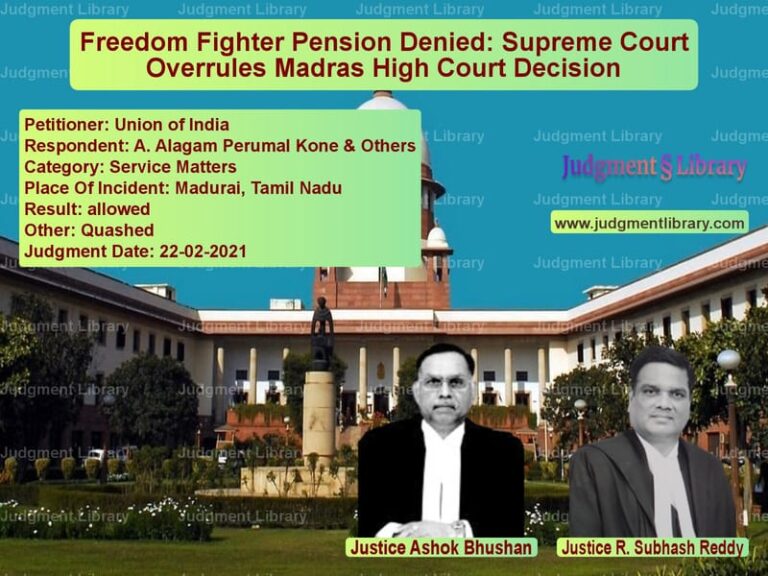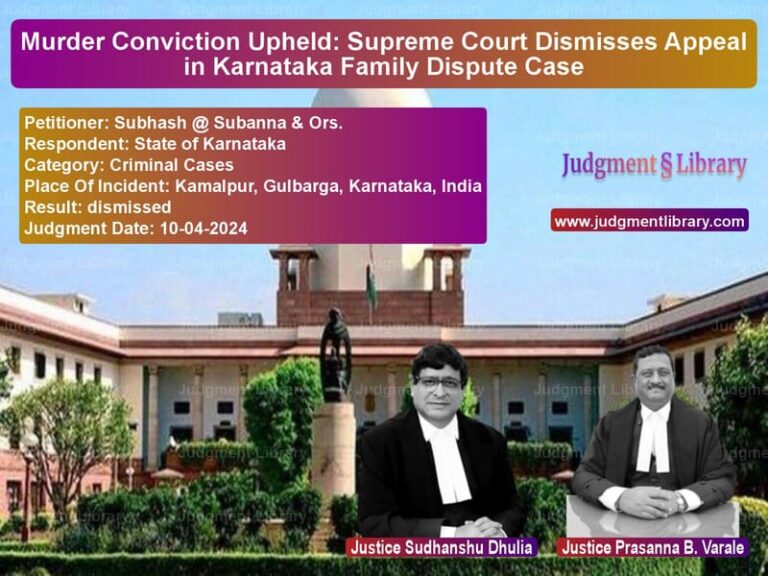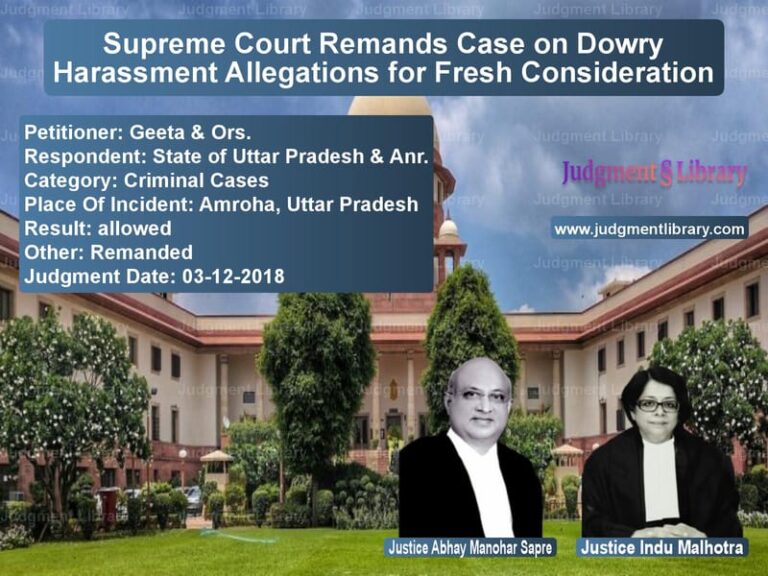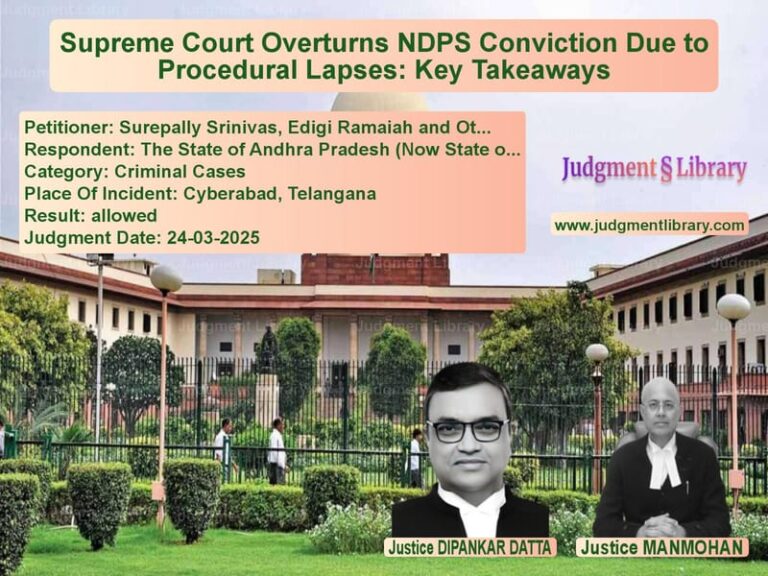Legal Battle Over Succession of Princely Property: A Landmark Judgment
The legal dispute surrounding the succession of the erstwhile princely state of Rampur revolved around a significant question—whether the personal law of the erstwhile ruler or the law of succession governing the rulership (Gaddi) would apply to the private properties declared at the time of accession to the Union of India. This case was brought before the Supreme Court in the form of civil appeals by Talat Fatima Hasan and others against the successors of Nawab Syed Murtaza Ali Khan.
The legal battle began with the question of whether the properties declared by the erstwhile ruler as his private properties would devolve under Muslim Personal Law or be governed by the rule of male lineal primogeniture. The appellants argued that the personal law should apply, allowing all legal heirs to inherit the properties equally. The respondents contended that the properties were integral to the Gaddi of Rampur and should be inherited by the eldest male successor alone.
Historical Background of the Merger Agreement
With the end of British rule in 1947, princely states had the option to join either India or Pakistan. The Nawab of Rampur signed an Instrument of Accession with the Dominion of India on May 15, 1949, merging the state with India. As per the agreement, he was entitled to retain private properties distinct from state properties and had to furnish an inventory of such properties.
The accession agreement granted the Nawab continued enjoyment of personal rights, privileges, and immunity from certain laws, along with a privy purse as compensation for the loss of sovereignty. The document also stated that succession to the Gaddi would be governed by the established law and custom.
Legal Dispute and Court Proceedings
The succession dispute arose upon the death of Nawab Raza Ali Khan in 1966. His son, Nawab Syed Murtaza Ali Khan, was recognized as the ruler and issued a certificate affirming his sole succession to the private properties of the late Nawab. However, other legal heirs challenged this in court, leading to extensive litigation.
The legal heirs claimed that after the merger, the Nawab was no longer a sovereign ruler but an ordinary citizen, and hence, his properties should be inherited as per Muslim Personal Law. On the other hand, the respondents contended that succession should follow the rule of primogeniture, under which the eldest male heir inherits all the property.
Arguments of the Petitioner
The petitioners argued that:
- The Nawab was a sovereign ruler only before the merger, and post-accession, he was merely a citizen entitled to personal property.
- The properties declared as private under the accession agreement were to be governed by personal law, not the rule of primogeniture.
- The Muslim Personal Law (Shariat) Application Act, 1937, which was applicable to Rampur, should determine the inheritance, ensuring equal distribution among all legal heirs.
- The recognition of Nawab Murtaza Ali Khan as the ruler was only for titular purposes and had no bearing on the succession of private properties.
Arguments of the Respondent
The respondents contended that:
- The properties in question were always attached to the Gaddi of Rampur and had to be inherited as per the rule of primogeniture.
- The erstwhile ruler, even after the merger, was granted a special status and privileges, which implied that the old rule of succession should continue to apply.
- The declaration of certain properties as private in the merger agreement did not change their character as properties tied to the rulership.
- The Nawab made trust settlements and grants favoring heirs other than the eldest son, recognizing that the main estate would pass entirely to the ruler’s successor.
Supreme Court’s Judgment
The Supreme Court examined precedents, including the cases of the Maharaja of Dholpur and the Maharaja of Travancore, where it had been held that private properties of rulers were distinct from their status as rulers. The court analyzed various provisions of the Constitution, including Articles 291 and 362, which dealt with the privileges of erstwhile rulers.
The court ruled that:
- After the integration of princely states, the rulers ceased to be sovereigns and were recognized only for personal privileges and not as political rulers.
- The properties declared as private properties in the accession agreement had to be treated as personal properties and governed by the personal law applicable to the late Nawab.
- The rule of primogeniture did not apply to the inheritance of private properties.
- Since the Nawab died intestate, the estate would be divided as per Muslim Personal Law among all his legal heirs.
Key Takeaways from the Judgment
This judgment reinforced the principle that erstwhile rulers, post-accession, were subject to personal laws regarding property succession. The case set a precedent in ensuring that succession to princely estates, once declared private, would not be governed by feudal laws but by the general principles of inheritance applicable to citizens.
Conclusion
The Supreme Court’s verdict in this case brought clarity to the complex issue of princely property succession. It emphasized that with the abolition of princely states, their rulers became ordinary citizens in matters of property inheritance. The decision upheld the principles of equality and personal law, ensuring that all rightful heirs received their due share in the estate.
Petitioner Name: Talat Fatima Hasan.Respondent Name: Nawab Syed Murtaza Ali Khan (D) By LRS & Ors..Judgment By: Justice Ranjan Gogoi, Justice Deepak Gupta, Justice Aniruddha Bose.Place Of Incident: Rampur, India.Judgment Date: 31-07-2019.
Don’t miss out on the full details! Download the complete judgment in PDF format below and gain valuable insights instantly!
Download Judgment: Talat Fatima Hasan vs Nawab Syed Murtaza A Supreme Court of India Judgment Dated 31-07-2019.pdf
Direct Downlaod Judgment: Direct downlaod this Judgment
See all petitions in Succession and Wills
See all petitions in Property Disputes
See all petitions in Contract Disputes
See all petitions in Judgment by Ranjan Gogoi
See all petitions in Judgment by Deepak Gupta
See all petitions in Judgment by Aniruddha Bose
See all petitions in allowed
See all petitions in supreme court of India judgments July 2019
See all petitions in 2019 judgments
See all posts in Civil Cases Category
See all allowed petitions in Civil Cases Category
See all Dismissed petitions in Civil Cases Category
See all partially allowed petitions in Civil Cases Category

